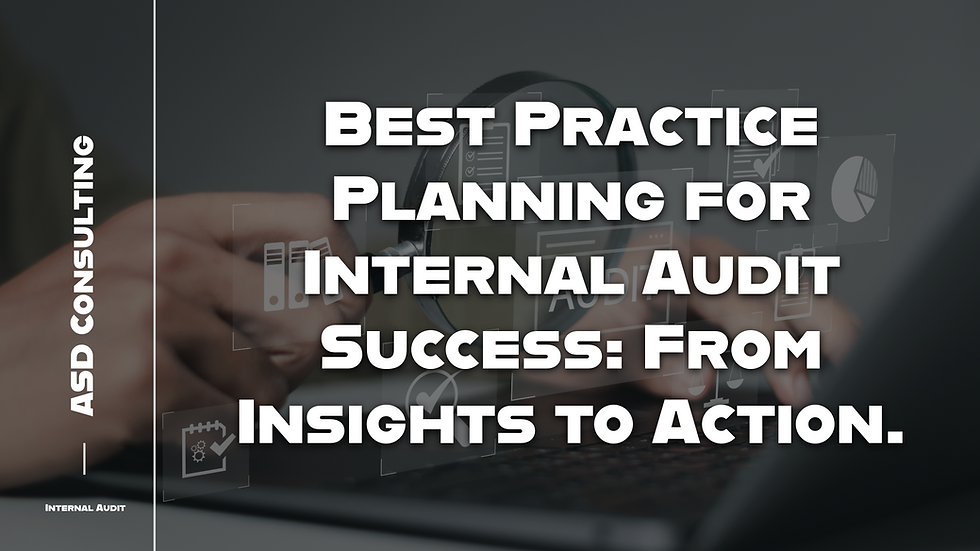Best Practice Planning for Internal Audit Success: From Plan to Powerful Reporting (Part 3/3)
- David Tyler

- Jun 3
- 3 min read

Welcome to the final instalment of our series, "Best Practice Planning for Internal Audit Success"! We've journeyed from understanding your organisation's entire risk landscape using a dynamic "Audit Universe" in Part 1, to strategically building a focused audit plan from those insights in Part 2. Now, we're going to tie it all together by looking at how that well-crafted plan forms the backbone for the entire audit cycle and enables powerful, comprehensive year-end reporting.
The Audit Cycle: A Continuous Journey: Once the audit plan is in place, it doesn't just sit on a shelf. It becomes the living guide for everything internal audit does throughout the year. Think of it as the flight plan for an airplane – it dictates where you're going, how frequently you'll check certain instruments, and what kind of information you'll gather along the way.
This plan directly influences the overall audit cycle, determining how often certain areas will be reviewed. For instance, high-risk areas identified in your dynamic Audit Universe will naturally receive more frequent attention than those with lower risk. This isn't about rigid rules, but about intelligent resource allocation based on what matters most to the business.
Crucially, the plan isn't just a list of independent audits to complete. It's a strategic framework that ensures we gather consistent, meaningful information throughout the year across different areas. Each individual audit contributes to a bigger picture, allowing us to build a holistic view of the organisation's health, rather than just isolated snapshots.
From Plan to Powerful Reporting: One of the most significant benefits of a well-planned audit approach comes at the end of the year, when internal audit provides its overall assessment to leadership and the board. Because our work has been guided by a strategic plan, we can provide a much richer, more comprehensive narrative on critical aspects of the organisation. The plan enables us to report clearly on:
The Control Environment: We can confidently speak about how effectively the company's internal safeguards are working across various operations and processes. Are controls doing what they're supposed to? Where are the strengths and where might improvements still be needed?
The Risk Management Framework: The plan allows us to assess whether the company is effectively identifying, evaluating, and managing its overall risks. Is the way the business handles risks robust and consistent?
The Risk Appetite: Perhaps most strategically, the plan helps us report on whether the company is operating within the level of risk it's willing to take to achieve its objectives. Are strategic decisions being made with a clear understanding of associated risks, and are those risks being managed appropriately?
This level of reporting moves beyond just a list of audit findings. It provides a strategic lens on the organisation's governance, risk management, and control capabilities. It helps leadership and the board make informed decisions, understand the overall health of the business, and steer the company confidently towards its future.
It truly reinforces the message: "Planning sets the team up to succeed." A strong, well-executed plan ensures that internal audit's efforts translate into meaningful insights and a clear, compelling story about the organisation's risk and control landscape. It transforms audit from a series of individual checks into a coherent, strategic function that adds tangible value.
Conclusion: Effective planning is the linchpin of a high-performing internal audit function. From building a dynamic understanding of risk, to strategically crafting the audit plan, and finally to enabling comprehensive year-end reporting, best-practice planning ensures internal audit is always focused on what truly matters. It allows us to provide valuable insights on the control environment, the effectiveness of risk management, and adherence to the organisation's risk appetite, ultimately empowering leadership with the information they need to navigate challenges and achieve strategic goals. This holistic approach truly amplifies internal audit's positive impact on the business.


Comments